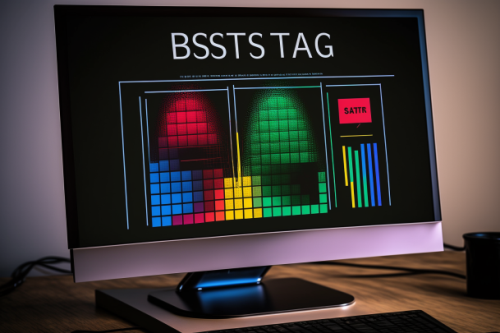

Usability testing is a key part of the design process, and can be done at every stage. It can save you time and money, help ensure your product is a success, and even give your business a competitive edge.
The right questions and tasks are essential for usability testing to be effective. They must be relevant, thoughtfully worded, and help users talk about their experiences.
Contents
Identifying Problem Areas
When conducting usability testing, it’s important to identify problem areas that are preventing users from accomplishing what they want. By uncovering those points of friction, you’re able to create user experiences that are intuitive and engaging for your users.
This can be done by observing real users completing tasks, while analyzing their experience and identifying areas of improvement. This can be done remotely, in person, or in a lab.
During the test, participants are asked to complete specific tasks on a website or app. These tasks can range from simple to complicated, and they are then evaluated by a team of UX researchers.
The evaluators may check the user interface against various heuristics to see how well it works. Some heuristics may be a little more obvious than others, but they still need to be checked out in order to find the most significant issues.
Once a problem is identified, it can be prioritized by the evaluators and then shared with the rest of the team to get a comprehensive picture of the overall user interface. This will help the team understand how best to improve the user interface and make it more functional and easier to use.
Another step in determining if a product is problematic is observing how long it takes for the user to accomplish the task. This can be measured using a task difficulty rating, as well as the post-task satisfaction rate.
It’s also a good idea to ask participants how they feel about the interface, and what they would like it to be improved upon. It’s a great way to gauge how the UI is received by your audience and can help you develop empathy for the user’s perspective.
One of the most effective ways to identify problems is by watching a team of users interacting with the product. This can be done either in-person or remotely, and can be a great way to gauge how users interact with the product and what they like and don’t like about it.
The evaluators can then work together to decide on the most severe problem areas that need to be fixed prior to the release of the product. This can save the organization a lot of time and money by ensuring that the product is developed to its most optimal potential before production begins.
Developing Empathy
Developing empathy when conducting usability testing is an important step to ensuring the user experience of your product is as seamless and productive as possible. The key to empathy is gaining a deep understanding of your users’ needs, motivations, and context of use.
Empathy is the ability to understand another person’s perspective and emotions. This ability is essential to the design of effective and innovative products that meet user needs.
The goal of user empathy is to “walk in your user’s shoes” and fully understand their perspectives, needs, fears, and motivations. According to Tim Brown, the CEO of IDEO, empathy is more than sympathy: it’s a “solution-seeking behavior.”
This kind of behavior enables designers to better identify their users’ unique situations, pain points, and requirements. It also enables them to create solutions that make the user’s life easier and more enjoyable.
In addition to empathy-focused research, a variety of user testing methods can be used to gain insights into user behavior. These tests can range from a simple one-on-one interview to a group test, and may be conducted in a classroom or on the job.
Another approach is to conduct focus groups with real users. These focus groups are a great way to get feedback about the user experience of your product and allow you to build relationships with real users.
Finally, it’s important to recruit a diverse set of users for your user testing sessions. You can do this by asking for volunteers from your target audience, or by using organizations that specialize in recruiting users with disabilities.
Regardless of the method you choose, it’s crucial to make sure your participants are well-represented in terms of gender, age, ethnicity, and physical abilities. This will ensure that your results are representative of the real-world situation in which your users will be using the product.
Developing empathy in your team is a good idea for any business that wants to provide customers with an excellent user experience. It can help your company avoid a number of common usability problems, including erroneous assumptions, bullying stakeholders, and designing “take what we give you” mentality that can cause negative outcomes for users and your product.



Prioritizing Development Decisions
Usability testing is a great way to identify the features and functions that people want from your product. It also helps you determine which features to avoid, ensuring that you don’t waste time and resources developing features that will not be used by your customers.
However, it’s important to keep in mind that there is a trade-off between implementing the recommendations from usability tests and the schedule and budget of your team. As such, you need to prioritize which areas of your website or app need the most attention and which are best left until later.
Prioritizing development decisions is a process that should be conducted throughout the lifecycle of your product, and it’s especially critical when using Agile or Scaled Agile methods. By making sure that all of your development efforts are focused on the highest-priority items, you’re able to ensure that your product stays on track and is completed on time and within budget.
Often, the first step to prioritizing development decisions is to create an evaluation table, which includes a weighted score of each feature’s importance to your users and objectives. Then, you can use a spreadsheet or a product management tool like Productboard to visualize the results and automatically rank and prioritize features according to your criteria.
Another approach to prioritizing features is to create a prioritized list of proposed design changes based on your usability findings. Then, meet with your team’s design and development stakeholders to review the proposed changes.
One of the most crucial parts of prioritizing development decisions is to understand the culture in which your organization operates. Some cultures don’t consider usability “bugs” or user experience issues worth entering into a defect tracking system, so it is important to communicate clear resolution steps with team members who will be entering bugs and other development issues into a bug database.
Once you’ve prioritized the most significant design changes, it is important to enter them into your defect-tracking system as soon as possible after you conduct testing. This will ensure that the issues identified in testing aren’t forgotten or deferred to future releases, which can have a serious impact on the quality of your product.
Creating Product Roadmaps
Creating a product roadmap can be an important part of the process of creating a new user experience. It can also help you keep development and design teams on track for the best possible outcomes.
A product roadmap is a strategic document that shows leadership and developers a high-level overview of the project, its strategic objectives, and how it will meet them. It’s different from a marketing or development roadmap, which will be more focused on the details of the features.
First, you need to decide what your priorities are for the roadmap. These priorities might include a specific feature, or they may be more general issues that need to be addressed within the next year.
When deciding what to prioritize, you want to make sure that it will have an impact on the business and is something your team can accomplish in the near future. You also need to consider the resources and talent you have at your disposal.
Another thing to consider is the length of time that you’ll need to create your product. The length of time will depend on how large your product is and how many features you’re planning to add.
For example, if your product is large and complex, you might need to plan for several years in order to get the right features developed. This will take a lot of planning and compromise, but it’s worth it to make the right decisions for your product.
You’ll also need to determine how you’ll break up the features into smaller, achievable epics. This can be done using an excel sheet or similar tool.
Once you have your roadmap ready, it’s time to present it to key stakeholders. This presentation needs to be tailored to your audience’s needs and expectations.
Then, you can start to explain the project’s goals and how it will help the company grow. This can be tricky to do in a concise way, but it’s essential to show everyone that you understand the company’s vision and the needs of your customer.
Now that you have your roadmap, it’s time to share it with your teams and start the development process. You’ll need to get buy-in from all of the relevant groups, but it’s worth it for the benefits that it will bring to the company.















